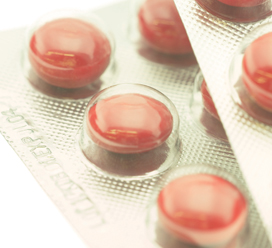Illicit medicines made up the bulk of seizures by customs enforcement agencies targeting intellectual property rights (IPR) breaches worldwide in 2013.
The World Customs Organization’s (WCO, http://www.wcoomd.org) latest Illicit Trade Report shows a worrying trend where more than half of the reported interceptions were illicit pharmaceutical products, a massive 2.3 billion pieces or three-quarters, 76.4 per cent of goods seized. They were worth some US$19 million.
This was followed by counterfeit electronic appliances and illicit foodstuffs – all of which threaten consumer health and safety, warns WCO. According to the organization it’s a dramatic change from 2012, when most intercepted commodities were accessories, and clothing and pharmaceutical products came in a third.
The organization however acknowledged that the outcome reflected the results obtained by countries in West and South Africa during operation Biyela, mainly aimed at targeting and intercepting illicit medicines. The report provides a comparative analysis of trends and patterns in five risk areas of enforcement, based on Customs seizures reported through the WCO Customs Enforcement Network database by its members.
It aims to raise awareness on emerging threats, highlight Customs efforts and contribute to the pool of information for studying the phenomenon of illegal trade. In terms of brand counterfeiting, WCO said seizures in 2013 included a diverse range of makes, amounting to over 1000 trademarks.
Nike was the most counterfeited brand last year, in 2012 it was Cialis. Other top faked brands by number of cases in 2013 were Apple, Rolex, Samsung and Adidas.
The report noted that despite the high number of intercepted medicines, clothing and branded items were in the top five of all ranking lists, whether the criteria was made according to the number of cases, pieces or value. China remained the main departure country for counterfeit goods in terms of number of cases, accounting for near half of the total number of cases (411,158) in 2013. This was followed by Hong Kong (5,954 cases) and India (957 cases).
However, the report said, when it came to the number of pieces of goods, India ranked first (with some 2.2 billion pieces). This was a result of large consignments of medicines intercepted at import by countries in Africa and the Middle East in particular. As for destination countries, the United States was top of the list by the number of cases.
“These figures support the results listed in the analysis of the data on reporting countries as most often the reporting country is the country that intercepted the goods, i.e. the destination country,” the report said. The report found patterns with regards to the packaging and concealment methods used to ship counterfeit goods.
Regardless of the type of products, the common traits were; items wrapped with transparent vinyl film with no logo, bundled together with a rubber band in batches of ten or 20 items and squashed into cheap cardboard boxes. They are transported as consolidated cargo; apparently to reduce the risk of a whole container being seized. Hiding counterfeit items behind cover loads or deep inside a container is a common practice as well.
“Ironically, the more Customs intercept illicit items, the more effort counterfeiters put in to avoid intervention. Domestic assembly is one popular way in which offenders try to circumvent Customs. Common practice is that small parts, shaped as a brand name, and blank products, are imported separately, in the hope that at least the blank products will be cleared,” the report adds.
As for drugs, according to the WCO more seizures were of cannabis, khat, psychotropic substances and cocaine. The trend tended to be downward for opiates. As the Customs body says, new forms of drugs flooding markets pose problems of identification and interception for enforcement agencies, especially as they are mainly traded via the internet and sent by post or express mail. The report is based on the data from the Customs Enforcement Network (CEN), which is a database of Customs seizures and offences worldwide.
And as for hand rolling and pipe tobacco the WCo found an increase in the number of seizures in 2013, but a slight decrease in quantity seized. For example, the UK reported that part- processed tobacco imported from the Far East and, to a greater extent, from eastern Europe is used mainly for the production of counterfeit hand rolling tobacco (HRT).
In a foreword WCO Secretary General Kunio Mikuriya said: “The toxic and corrosive nature of illicit trade and organized transnational crime harms economic growth and job creation, challenges the rule of law, robs governments of needed revenue and threatens human rights and quality of life, and thus requires a strong, internationally coordinated response.”










